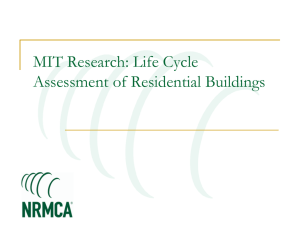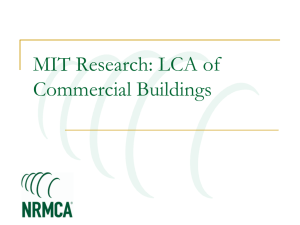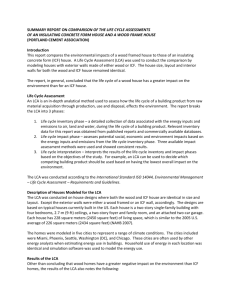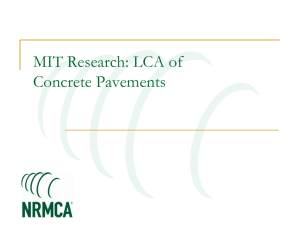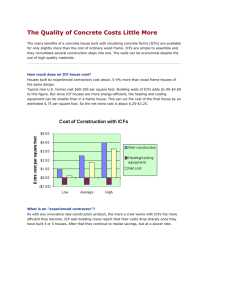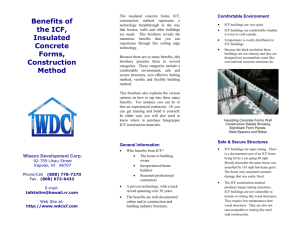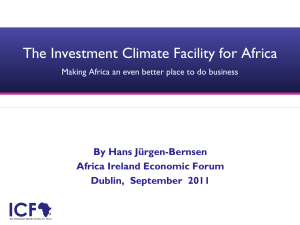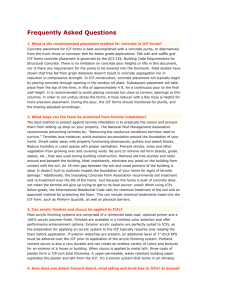MIT Concrete Sustainability Hub
advertisement
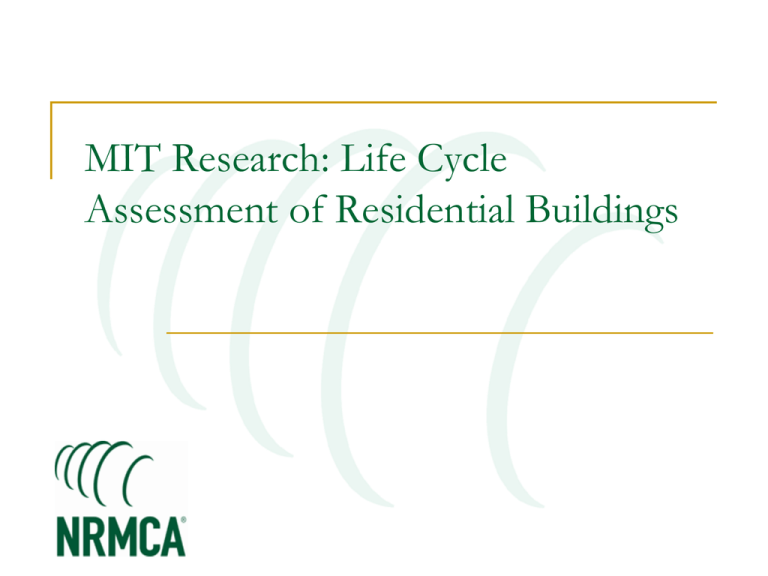
MIT Research: Life Cycle Assessment of Residential Buildings MIT Concrete Sustainability Hub $10 million investment over 5 years Funded equally by RMCREF & PCA NRMCA providing technical support and guidance NRMCA and state associations to play a critical role in the technology transfer Goals Identify areas in which concrete excels Identify opportunities for improvement Create solid technical basis for future industry development 3 Research Platforms Concrete Science Platform: Mission Scientific breakthroughs toward reducing CO2 footprint of cement and concrete Strength with less material Lower energy processing Chemical stability Building Technology Platform Mission: Life Cycle Assessment (LCA) of Concrete Buildings and Pavements to Identify Impacts and Opportunities Research Topics: Material Flow Analysis LCA of commercial buildings LCA of residential buildings LCA of pavements LCCA of building materials Residential Buildings Greenhouse Gas Emissions Industry: 29% Transportation: 31% Residential Buildings: 21% Commercial Buildings: 19% Methodology Standardized LCA methodology critical Increase consistency of LCA MIT proposes good practices for LCA Methodology Transparency of data Define scope Identify system boundaries Define functional unit Transparency Life Cycle Perspective Functional Unit Structural Systems Considered Insulated Concrete Forms (ICF) Traditional Wood Framing Benchmark Single Family Building 2 stories 2,400 ft2 ICF Wood Phoenix Chicago Benchmark Multi-Family Building 4 stories 33,763 ft2 Phoenix ICF Wood Chicago Structures 2 stories Single Family 4 stories Multi-Family Energy Modeling 60 YEAR Benchmark Analysis 2 CO equivalent Resources Water Global Warming Potential Ozone Depletion Acidification Eutrophication Smog Formation Human Toxicity Eco Toxicity Waste Land Use Weight of 2 Materials(lbs/sf ) Embodied Emissions Thermal Mass Benefits Annual Energy Use Intensity (Chicago) Annual Energy Use Intensity (Phoenix) Impacts The GWP of the ICF house in is approximately 6%-10% lower than the light-frame wood house. Over a 60-year life cycle, the lower (5%8% for single family, 4.4%-6.2% for multifamily) operating GWP outweighs the initially equal or higher embodied GWP for ICF buildings. Impacts Impact Reduction - Air Tightness Other Impact Reductions ICF - 6 in core to a 4 in core Increasing SCM (such as fly ash) from 10% to 50%. Can decrease pre-use GWP by 12-14% Life Cycle Cost Analysis Life Cycle Cost Compared to light-frame wood, ICF $2.36-$4.09/ft2 ($25-44/m2) of wall area higher in Chicago -$0.08 to $4.15/ft2 (-$1 to $45/m2) of wall area in Phoenix Over the total life cycle cost, however, ICF construction increases the price of a house by less than 5%. More Information Full report available from MIT Concrete Sustainability Hub at web.mit.edu/cshub. MIT Hub established by RMC Research & Education Foundations Portland Cement Association NRMCA providing technical support Transfer research into practice Visit www.nrmca.org
